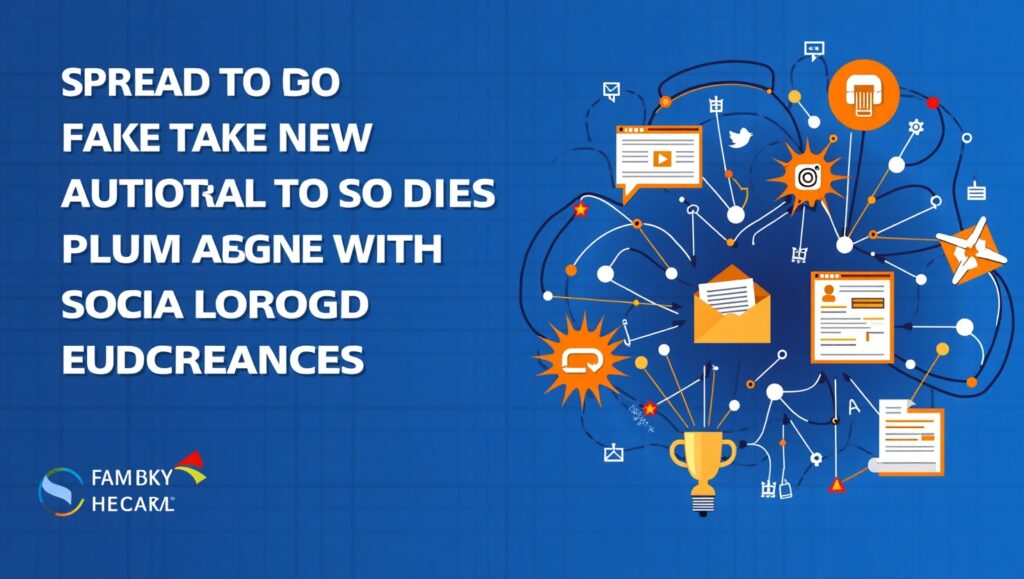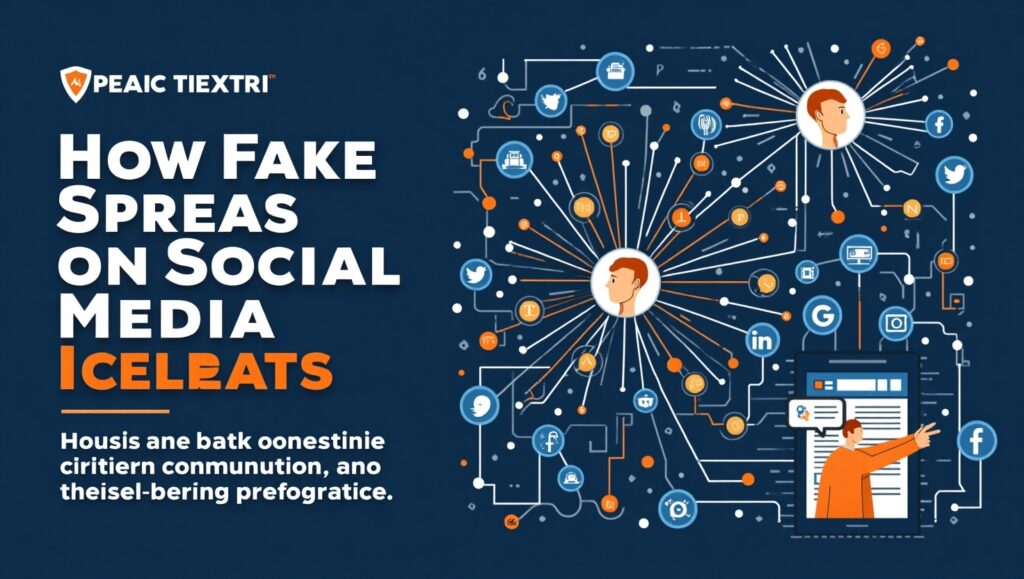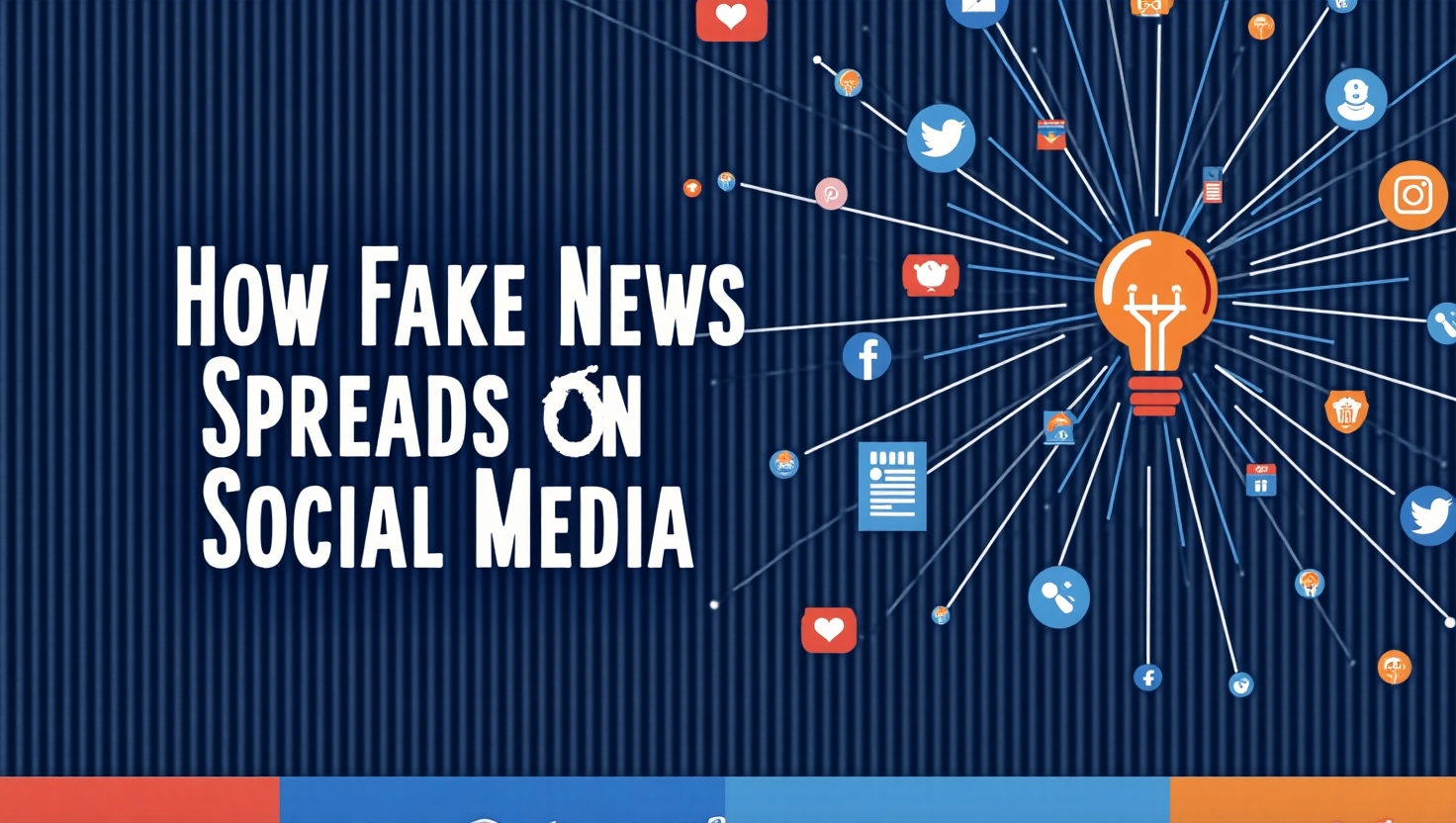Social networking is now the quickest means to spread news and information in our highly linked society. But this speed and ease of access have also made it easier for false information to proliferate quickly. Fake news on sites like Facebook, X (previously Twitter), TikTok, and WhatsApp is more harmful than ever in 2025. It may change people’s minds, cause panic, and even change the outcome of elections. Individuals, businesses, and governments who want to fight disinformation and keep people’s confidence must understand how fake news spreads on social media.

How social media algorithms work like viruses
Engagement-based algorithms run social media sites. These algorithms put content that generates likes, shares, comments, or views at the top of the list, even if the information is fake. Fake news typically includes language that makes people feel strongly, alarming headlines, or dramatic pictures that make people feel strongly. The algorithm quickly promotes these posts, making them go viral before fact-checkers can step in. A false health claim about a “miracle cure,” for example, might get thousands of shares in only a few hours since it offers people hope. But the truth spreads far more slowly, even though it could be less entertaining or hard to accept.
- Confirmation Bias and Echo Chambers
Echo chambers are one of the main reasons why fake news spreads so quickly. others can connect with others who share their ideas on social media, which creates tight-knit groups that often don’t allow others with different perspectives to join. People in these bubbles are more likely to accept and disseminate news that fits with their beliefs, even if it’s not true. Confirmation bias, which is the tendency of people to prefer information that supports their current beliefs, makes this even stronger. For example, during an election season, a fake post that attacks a political candidate may fast spread among people who don’t like that candidate and want to believe and share anything that backs up their opinion. - Bots and fake accounts
By 2025, phoney accounts and bots will be much more advanced than they are now. Coordinated networks or bad actors, such as foreign governments or political groups, typically control these. Bots help spread false information by commenting on, liking, and retweeting posts that are wrong on a large scale. This gives the false impression that there is a lot of agreement or popularity, which makes actual users think that the news must be true if so many other people believe it. Bots are responsible for a lot of fake news spreading, especially during times of crisis like pandemics, wars, or national elections. - Not being good with technology
Even while more people have access to the internet, many still don’t know how to critically analyse what they find there. People sometimes confuse opinion with fact or satire with genuine news. Older people, in particular, may not be able to tell the difference between phoney websites and real ones. On the other side, younger people might share things without reading the whole thing, just the headline. People not knowing where to find reliable information, along with the need to be the first to post “breaking news,” makes it easy for false information to spread. - Financial Incentives

Behind the Fake News
Headlines that are clickbait make money from ads. A lot of websites and content creators post fake news items on purpose because they know that controversy gets people to click. The more ridiculous the assertion, the more people will see it. In a lot of cases, false news isn’t just about politics; it’s also a way to make money. For instance, when big events happen around the world, like the Olympics or natural disasters, a lot of fake news sites pop up with fake stories to get people to visit and make money from ads, often without caring about public safety or the truth.- What happens in the real world because of fake news
Fake news is not safe. It has caused people to be afraid of vaccines, concern about money, political turmoil, and even war by 2025. During the COVID-19 epidemic, false information regarding public health caused deaths that could have been avoided. False reports throughout wars have caused diplomatic problems. It’s not just about lying to people; it’s about putting lives, stability, and democracy at danger.
In conclusion, we need to fight fake news.
Everyone has a part to play in stopping the spread of fake news on social media. Tech businesses need to be more open and strict about how they moderate material. Governments should put money into initiatives that teach people how to use technology. And most importantly, people need to think critically, check their sources, and not share information that hasn’t been proven. In the fast-paced digital age, lies often spread faster than the truth. But we can change that by being alert and responsible. A healthy society needs reliable information to work. Let’s keep it safe. SEO Keywords: how fake news spreads on social media, misinformation 2025, viral fake news, social media manipulation, echo chambers, bots disseminating fake news, digital literacy, fake news dangers, and fighting misinformation. If you want this turned into a WordPress article or need a thumbnail and meta description, please let me know. Ask ChatGPT for help Tone Style of Writing Keep going Tools Add my profile information




